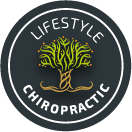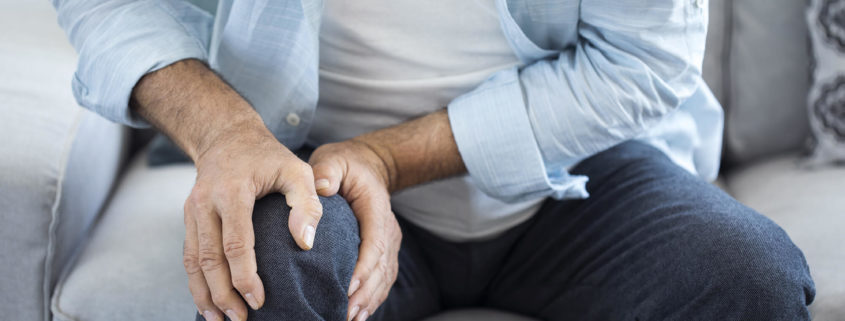Got Knee Pain?
Got knee pain?
There are many causes of pain in the knees, and with that many treatment options. In my opinion, the best treatment of knee pain is prevention. Often times, knee dysfunction and pain is not due to a knee problem at all! Now, there are several instances when life finds a way to deliver an ill-timed knee injury, and with those cases ALWAYS be evaluated by your favorite Chiropractor (hopefully us!) right away to prevent onset of long-term problems. SO! What happens when you go through all the tests, get the x-rays, the MRI, and the doctor says “There isn’t anything wrong.” What now?
Often times, when we are working with someone suffering from long-term knee pain with activity, we tend to focus on biomechanical cause(s) of dysfunction; IMPROVE YOUR MOVEMENTS! In doing so, we evaluate three key factors (among many others) that could be significant factors in treating knee pain.
1. Core stability
Core stability is of the utmost importance with all activity. Imagine you are building a fence; the first post NEEDS to be stable, secure and strong. If not, the rest of fence is forced to compensate for any lack of stability, which will lead to eventual d of the entire structure.
When working on core stability, we focus less on building muscular strength by doing hours of planks, and thousands of sit-ups. Instead, let us start with how you breathe. Start on your back and take three big deliberate breaths. Ideally, you should have relaxed shoulders; little elevation of your ribs, and your abdominal cavity should fill and expand in all directions. As simple as breathing may be, many of us do not “properly” breathe while adequately activating our diaphragm. Instead, many utilize accessory musculature during respiration, musculature normally active during bouts of exercises and other physical activity
The diaphragm is a thin sheet of muscle located in the abdomen. Its primary function is respiration, as you breath the diaphragm creates changes in pressure within your lungs allowing air to enter during inspiration and to exit during exhalation. The diaphragm has a secondary stability function during respiration creating sufficient intra-abdominal pressure and low back stability. With a decrease in core stabilization, movement of our extremities must compensate by altering biomechanics, leading to increased risk of injury and dysfunction. The more rigid our core, the better our movements become!
2. The Foot: Function vs Fashion.
Your feet serve a variety of functions, walking, kicking, running, dancing …you get the idea. Feet have hundreds of muscles, thousands upon thousands of nerves, 26 bones and 33 joints each. That is a ton of anatomy packed away in overly padded shoes with artificial supports. Shoes should be less about fashion and more about function, not just the function of your shoes but also the function of your FEET!
There are many different styles of shoes to consider when selecting a good pair to use during exercise, I tend to focus on the following these three components.
- Heel elevation: The elevation of the heel alters your natural biomechanics, shortening the calf musculature and Achilles’ tendon. Shortening of these structures reduces the natural “spring” in your step. A raised heel not only alters your posture significantly, heels will change the way your nervous system senses the ground, and blood vessels become stretched and compressed.
- Toe box width: Toes are designed to spread! When toes are crammed into a shoe with a narrow toe box, you subject your lower body to significant dysfunction by reducing body weight distribution evenly over a broader base of support. In addition, a narrow toe box can lead to the formation of bunions and even a Morton’s neuron.
- Artificial support: When it comes to shoes, “arch support” is a huge selling point. However, at the end of day, artificial support of any kind drastically reduces the strength of your intrinsic musculature and your natural arches. Now there is a place for arch supports, and that is a decision for you to make on your own, I feel that the end goal should be to strengthen your foot as a whole.
3. It’s all in the hips.
Your hips are key in moving the lower extremities and dysfunction with hip stability and flexibility can lead to significant knee pain. There are plenty of ways to help improve your hips stability and mobility, the first step should be to have a throughout evaluation to determine what YOUR specific needs may be.
When address the hips, I typically evaluate two things.
- Stability: When we walk, we spend 80% of our time standing on one foot. Therefore, single leg balance and stability is key! There are a number of ways to improve hip stability, many of which usually involve balancing drills.
- Mobility: The iliofemoral (hip) joint is classified as a ball and socket joint, meaning that it is designed for lots of motion. Use that motion, or lose that motion! Controlled articular rotations (CARs) are a fantastic way to ensure hip mobility is enhanced and maintained. The basic movement pattern involved hip flexion, abduction, adduction, and extension in a slow and controlled motion. These rotational motions allow the deep ligaments of the iliofemoral joint to maintain their optimal function.
As we treat those with knee pain without a clear cause, be vigilant to how your entire lower extremity operates and especially how you use your body. We like to say “movement is medicine” but it is important to have quality movement!
Dr. Jerome Longoria DC, CCSP, ICSC,
Lifestyle Chiropractic
3192 N Windsong Dr.
Prescott Valley, AZ 86314
928.288.0500





